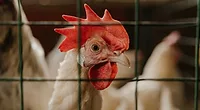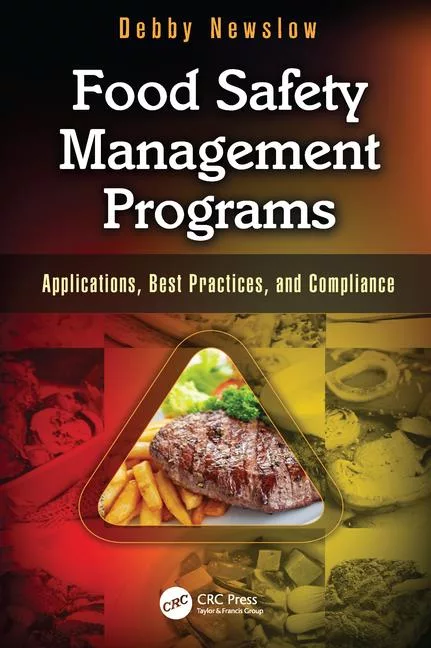Solving Food Pathogen Outbreaks and Recalls

It’s a consultant’s cliché that you can’t manage what you don’t measure, but when it comes to leafy greens and pathogens, there is a strong element of truth to it. By the time regulators halt sales of contaminated greens, the public is already reporting illness. Without rapid ways to track and share information, food safety suffers. A recent announcement of an investigation by the U.S. Food and Drug Administration (FDA) and the U.S. Centers for Disease Control and Prevention (CDC) of a multistate outbreak of Cyclospora illnesses highlights why a well-positioned public-private partnership (PPP) including farmers, packers, retailers, and government officials could seize on early hazards and warning signs to improve food safety earlier.
Leafy Green Food Scares
Food safety is a public good. And, the U.S. is fortunate to have what is regarded as one of the safest food supplies in the world. That said, there are—more frequently than we would like—reports of hazards in the U.S. food supply. According to FDA, in 2018, there were two outbreak investigations of Escherichia coli O157:H7 related to leafy greens, followed by three in 2019. (Beyond E. coli, Salmonella, Cyclospora, and Listeria monocytogenes also have been found in outbreak investigations over the last few years.) Foodborne illness, caused by ingesting food contaminated with microbiological hazards, is a source of preventable illness and mortality in the U.S.
The food safety landscape is made up of the efforts of many different stakeholders. Food suppliers who are responsible for food safety from farm to shelf need awareness, knowledge, and skills to improve food safety. They need funds, and they need management strategies. Food suppliers also need access to markets to generate sufficient returns to invest more in food safety and sustain their ongoing businesses. The broad network of actors that support food safety includes many who do not directly participate in food market activities, but whose efforts are indispensable, such as industry organizations, training organizations, regulatory and nonregulatory government agencies, research institutes, third-party certification programs, inspectors, auditors, testing laboratories, and PPPs.
In the U.S., FDA and CDC work together to conduct epidemiological studies and gather laboratory information (including whole-genome sequencing) during outbreak investigations. This work has been beneficial in improving processes and practices. Recently, FDA issued a report on its investigation of what were actually three distinct outbreaks occurring in the fall of 2019. In the report, FDA stated it believes ruminants, most likely cattle, are the source of contamination in these outbreaks, but exactly how the pathogens ended up on leafy greens remains a mystery. To address this, the California Leafy Green Products Handler Marketing Agreement (LGMA) formed an Adjacent Lands Subcommittee to make romaine lettuce safer.
Data Already Exist
The leafy greens industry, and the produce sector more broadly, is working to learn more about how leafy greens and other fruits and vegetables are being exposed to pathogens like E. coli in the environment through a series of research projects. Work is going on at the University of Arizona with FDA. Work is also underway in California’s central valley in cooperation with FDA and the California Department of Food and Agriculture.
However, more can be done—with an eye towards providing society with information to prevent future outbreaks. Data from growers and packers are already available, and regulators also collect data. But more efforts are needed, especially from the private sector. Currently, public sector data to measure some impacts exists on a limited number of cases, including FDA’s and state officials’ inspection data, and CDC traceback data.
However, these data are limited, not comprehensive, and not well-targeted for predicting the future and preventing future outbreaks. The private sector—producers, manufacturers, suppliers, and sellers—also collects data, both for internal and external purposes. Some of that data are reported to the government and provided for government and third-party audits, but much of it pertains to internal compliance and control measures. This includes data around the number of test results within acceptable values, audit scores through internal or third-party audits, “risk” scores for industrial plants and suppliers, external certifications of facilities, frequency of required audits, and number of regulatory violations. If private sector data—including environmental data—could be made available and aggregated with trend information over time, it could prove useful for public health actions, improve food safety, and increase food security.
As noted in the White Paper by the Joint Institute for Food Safety And Applied Nutrition (JIFSAN), the convergence of public and private sector interests is a sweet spot for public-private collaboration. This convergence is a necessary. Public and private partners may have different motivations and goals, but in the sweet spot, benefits meet expectations on both sides. Both sectors already share many goals—fair competition and level playing fields, orderly and predictable markets, rule of law and avenues of recourse, clarity and feasibility of regulations, and consumer awareness and empowerment. If partners start with a narrowly scoped sweet spot, they can address sensitive issues around confidentiality, competition, conflicts of interest, institutional integrity, public trust, and consumer confidence. With the Food Safety Modernization Act (FSMA) as the starting point for collaboration, data-sharing platforms facilitate efforts to tier risks and inspection priorities, thereby promoting food safety in the near and long-term.
Data Sharing in PPPs
The publication “Principles for Building Public-Private Partnerships to Benefit Food Safety, Nutrition, and Health Research” can serve as a guide for the establishment of a PPP to address needs with leafy greens. PPPs start with a goal that unites and galvanizes both sectors—in a space where public government and private corporate interests converge. The future end point highlights what shared efforts can achieve above and beyond what each party could accomplish on their own.
To start, partners have to be motivated to partner. Each partner brings their own set of drivers, along with unique skill sets and comparative advantages. In PPPs, diversity is built in. While many partnerships rely on like-minded and like-situated partners, the value of bringing public and private sectors together lies in their differing profiles. Transparency in PPPs starts with transparent acknowledgement and appreciation of these different starting points, forming the basis of mutual respect among partners. If the public sector does not recognize and leave room for private sector considerations, it is difficult to sustain PPPs. Likewise, if the private sector does not embrace public sector ambitions in promoting public health, the partnership rests on a shaky foundation. Each sector can acknowledge and accommodate the interests of the other sector as long as this does not undermine its own interests.
Partnership incentives are built into the design and structure of the partnership. Borrowing from the JIFSAN report, incentives take the form of if-then relationships: “if” being the action, and “then” being the desired result. Linked this way, each desired result becomes a reason to act.
For example:
• If I contribute financially, I can be part of the decision making—I have an incentive to contribute.
• If I contribute more, I can stimulate more activities—I have an incentive to contribute more.
• If I contribute my time and effort, I can help develop lessons learned that create a better knowledge base, improve implementation and get more effective results—I have an incentive to be more engaged.
Combining public and private sectors, and adding other sectors like research institutes and nonprofit organizations, may expand partner benefits. Some nongovernmental organizations have public sector mandates, such as requiring all activities to have a public health benefit, although they are funded largely by the private sector. A well-designed PPP can leverage key benefits from its multi-sectoral approach. The Institute of Medicine’s workshop summary on Building Public-Private Partnerships in Food and Nutrition lists quite a few, including:
• Greater variety of expertise and perspectives, with fewer blind spots
• Capacity to leverage multiple resources
• Enhanced credibility from broadened involvement and buy-in
• Consistency in messaging and action that helps the public make good choices
Whether these benefits are realized depends on many factors. Not all partners in a PPP have to benefit the same way; however, no partner should be selectively disadvantaged. The starting point is usually a public sector-prescribed regulatory context that frames private sector behavior. A hallmark of FSMA is its extension of public welfare responsibilities to the private sector. Especially in these contexts, a PPP gives private sector partners an opportunity to be more interactive—and hopefully more constructive—about the interplay of market conditions and regulatory requirements, all working together for the public good.
Success with a U.S. Department of Agriculture-Branded Foods Database
The proposal for a food safety PPP discussed here takes inspiration from the well-considered precedent of the U.S. Department of Agriculture Global Branded Food Products Database, which includes ingredient information. The proposal envisions a number of key structural components, including a data repository, a secretariat, a governing body, and multiple working groups (operations, criteria, IT, legal, communications), all to be developed through ensuing discussions, coordination, and implementation. With enough support, this PPP can be coordinated and catalyzed through a working group that reaches out through listening sessions. With sufficient buy-in and support, this PPP can reach its goals of improving food safety and reducing foodborne illness in the U.S. and across the world—making healthy food choices even easier.
To this end, we propose an outline for a PPP to create a database of food safety information for leafy greens. Can we agree on the mission to enhance global health by reducing the risk of foodborne illness through increased understanding of food safety and improved implementation of data reporting along the entire food production and distribution chains? The initial step would be the development of data sharing platform available to government, industry, and the scientific community. Can we agree on the objective to promote public health, food safety, and nutrition, and reduce the risk of foodborne illness by integrating industry data (blinded and protected to ensure proprietary data is not linked to individual companies or actors) and public data for a comprehensive view of operating practices and results? This is our path forward; please join us!
Looking for quick answers on food safety topics?
Try Ask FSM, our new smart AI search tool.
Ask FSM →








